
5 things to know about Winnipeg’s big sewage problem
115 billion litres, 70 years to fix, $5.5 billion in lawsuits
When Courtney Onstad was out in the field collecting samples and searching for gold, it wasn’t the thrill of the find she was after. What excited her most was the science behind everything.
Geoscience is “all around” us. It’s something you can literally reach out and touch — “so much more than rocks,” she said. It explains how mountains form and water and ecosystems interconnect, it can help us understand hazards and weather patterns and reveals the Earth’s evolving history in fossils and formations.
At 29, Onstad represents one of the most sought-after resources in the mining and exploration industry today — young talent.
Canada’s federal and provincial governments aspire to become world leaders in the rush for what are known as critical minerals — like manganese for wind turbines, cobalt for electric vehicles and tellurium for solar panels. Each is seen as crucial to building a higher-tech and lower-carbon economy.
The federal government sees the push for critical minerals as “a generational opportunity.” It estimates the country’s 63 major critical mining projects planned or currently under construction are worth more than $60 billion in potential investment. But the industry will need a steady workforce, and multiple industry surveys suggest that isn’t in the cards.
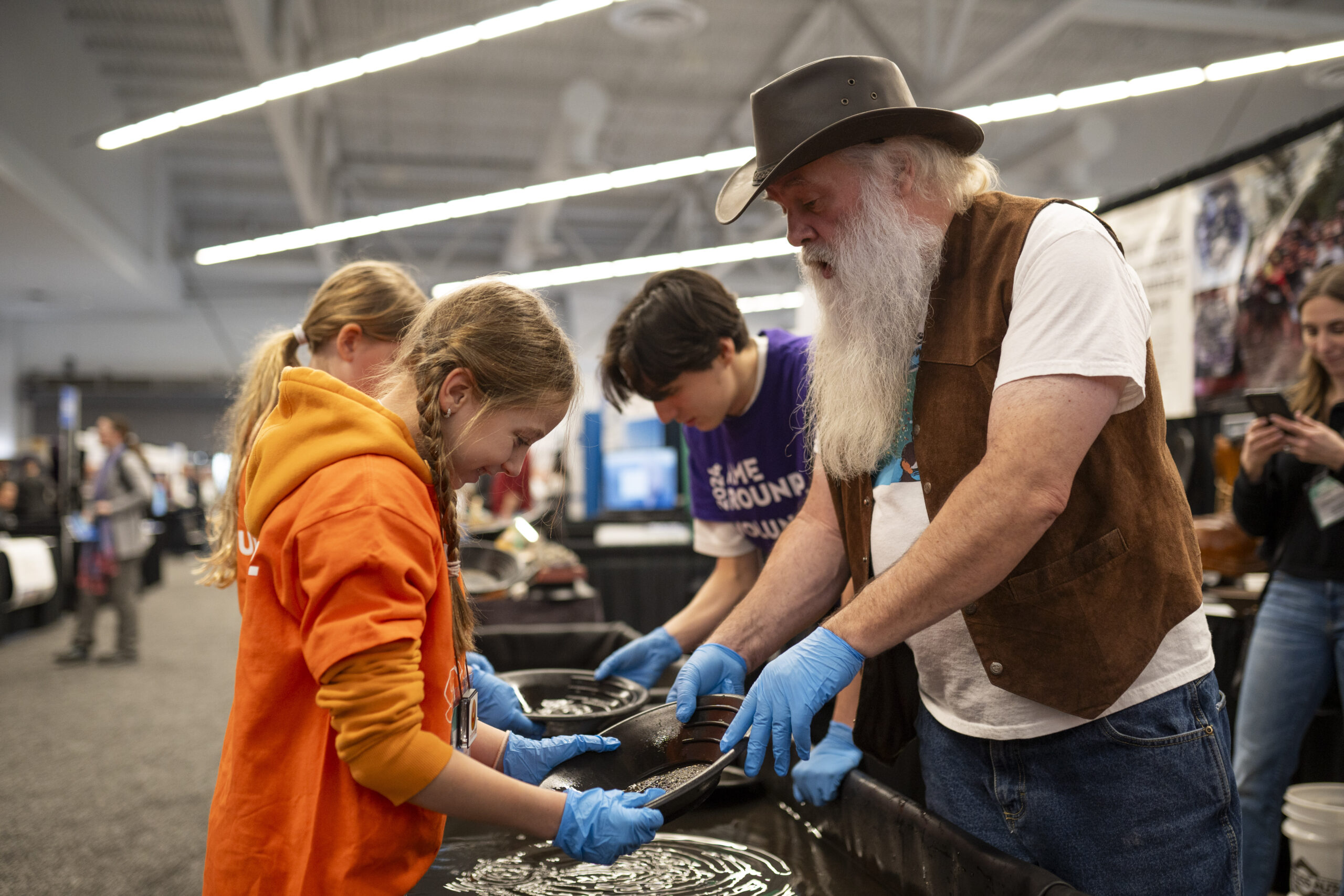
Mining — long associated with dirty days spent deep underground — has a reputational challenge. The industry’s environmental footprint, the occupational risks and the remote nature of the work have all put off potential recruits.
Jobs in mining are often the last choice for young people, according to a recent poll. Mining education programs are shrinking. Meanwhile the share of people nearing retirement from the industry is steadily increasing. Some CEOs are worried a new generation of miners is not stepping in fast enough.
Without more young people taking mining jobs, industry groups warn production could slow and the clean energy transition could be derailed.
Finding enough young talent to support the mining industry is a “nearly existential challenge,” according to a recent survey from PricewaterhouseCoopers. The industry has a complex talent problem that could have a big impact on profitability and production over the next decade, according to the multinational accounting firm.
One of the reasons people aren’t choosing mining as a career is its poor reputation, Ryan Montpellier, executive director at the Mining Industry Human Resources Council, told The Narwhal. The council is an independent non-profit that works with mining and exploration companies, organized labour, educational institutes and industry associations to address labour challenges in the Canadian minerals and metals industry. In 2020 and 2023, the council hired Abacus Data to survey 15- to 30-year-olds in Canada about their perceptions of careers in mining.

The survey painted somewhat of a bleak picture: mining was viewed as a good-paying job with benefits, but it was also seen as dirty, dangerous and physically demanding. Sixty-six per cent of respondents said they definitely wouldn’t or probably wouldn’t work in mining. However, survey results also showed a slight increase in those considering the sector, rising from 31 per cent of respondents in 2020 up to 34 per cent in 2023.
For Montpellier, it’s a communication and perception challenge. “The industry really is a safe sector,” he said. “It is doing a ton of work in the area of sustainability and in the area of responsible mining.”
Overall worker health and safety in mining has improved, in large part, because of labour unions and industry associations, according to the federal government’s annual mining performance report. Between 2011 and 2019, the rate of injuries and deaths have fluctuated and generally declined.

Meanwhile mining reform advocates continue to call on the government and industry to address serious environmental concerns. Mine waste, which can be toxic, is a major and growing liability for the environment and taxpayers. In some cases, like B.C.’s Tulsequah Chief mine or the Yukon’s Faro Mine, projects have polluted sites for decades.
Mining also has a significant impact on the economy. It’s a major industry in Canada that directly and indirectly employs about one in 31 people. The jobs in exploration and mining are diverse. They can include geoscientists, engineers and skilled tradespeople like heavy equipment mechanics, electricians, welders and pipefitters. These positions can also be found in many other sectors, forcing mining to compete for talent.
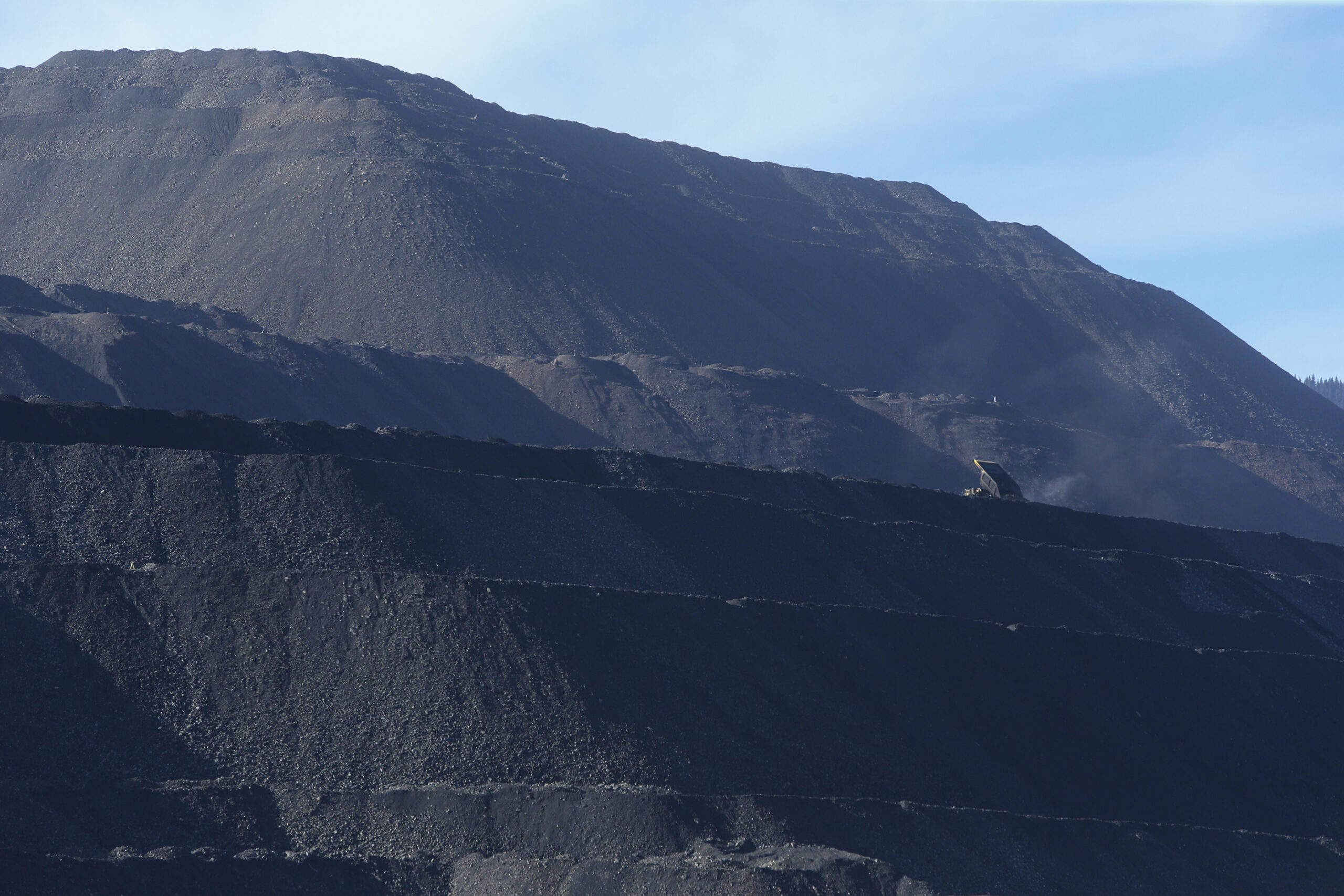
Promoting more positive attitudes toward mining is one of the key strategies industry groups are leaning on to bring in the next generation. In an effort to reach young people and present the sector as a viable career, the council launched a campaign titled, “We need mining, mining needs you.” Funded in part by the Government of Canada, the outreach includes videos, explainers and curriculum focused on presenting mining as a modern career, with a diverse workforce that is contributing to a green energy transition. The council also has co-op opportunities, ambassadors to meet with classrooms and Indigenous communities, as well as scholarships. It’s even on TikTok.
Internationally, the World Gold Council, representing some of the world’s biggest gold companies, hired English actor Idris Elba to star in an hour-long promotional film. It “traces the human story of gold” and explores “why the element’s contributions remain crucial to our evolution.” The highly produced video opens in Val-d’Or, Que., and drops Elba down into one of Canada’s biggest gold deposits at LaRonde mine. In the final scenes, the actor says the “best thing about gold is being able to wear it” followed by flashes of royalty, hip-hop artists and actors decked in gold. Taylor Swift, Dua Lipa, Zendaya and Kate Middleton make appearances; descriptions of pollution, wildlife impacts and climate change do not.
Conversations about mining pollution and the climate crisis come up often with the younger generations, Montpellier said, including with his own kids. He tells them being part of the industry is where you can have the “biggest impact on the environment you could possibly imagine.” He points to increasing the supply of minerals used to make things like batteries and solar panels, Canada’s domestic environmental mining record and the opportunity to design and build mines in a sustainable way.
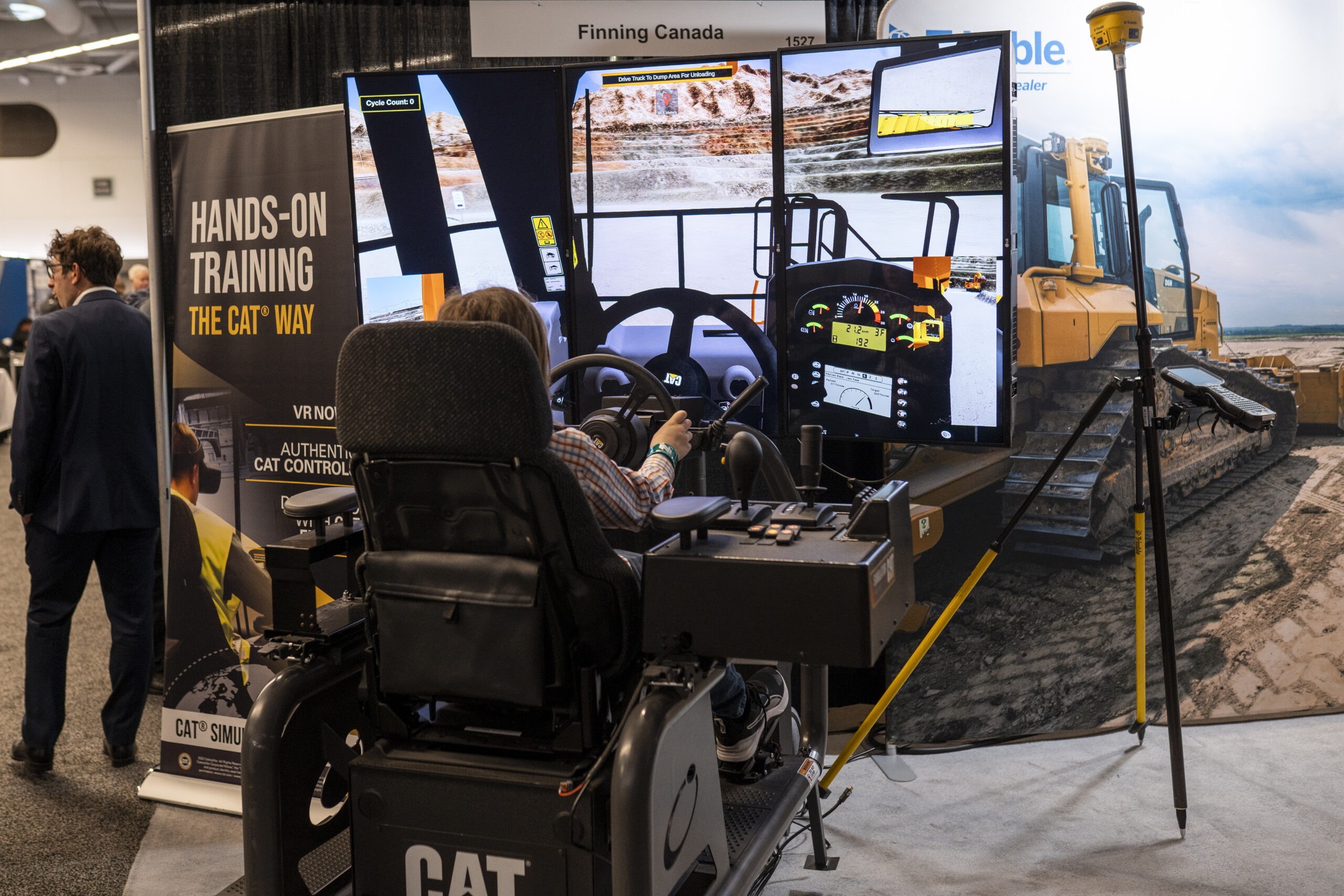
Sarah Campbell has navigated conversations about mining’s “dirty” reputation. She was introduced to the world of mining when she was just 18 years old after joining her geologist dad in the field. She loved working outside with a small team and got on-the-job training as a geotechnician. She’s now 31 and working as a geotechnician, prospector and independent contractor for several companies.
One critical step Campbell sees to attract younger people to the industry is doing a better job of having honest conversations about environmental impact. “I tell people, yes, mining is inherently a dirty business. There’s no denying that.” Companies need to go beyond greenwashing campaigns and acknowledge the very real and valid concerns people have, she said. “I really wish companies were just more honest” rather than “preach that they’re completely clean.” Part of that is being frank and explaining what minerals are needed, how they are going to be extracted, how impact will be reduced and what is going to happen to restore the land as best as possible, she said.
It’s scary to think people are not choosing this career, she said, because it’s her belief that if Canadian mining falters, more minerals will be imported from places with weaker environmental laws.
“I want younger people to join the industry,” she said.
In particular, Campbell said she’d love to see more women in the workforce. Women represent just 13 per cent of the mining workforce in Canada, down from 17 per cent in 2021.
Raiyana Umar recently received an award from Women in Mining Canada, an organization focused on empowering women in the industry. The 26-year-old is in her final year of an undergraduate degree in chemical engineering at Laurentian University, in the mining town of Sudbury. As a student, she has worked to promote gender diversity in sciences through the Laurentian Women in Engineering Club.
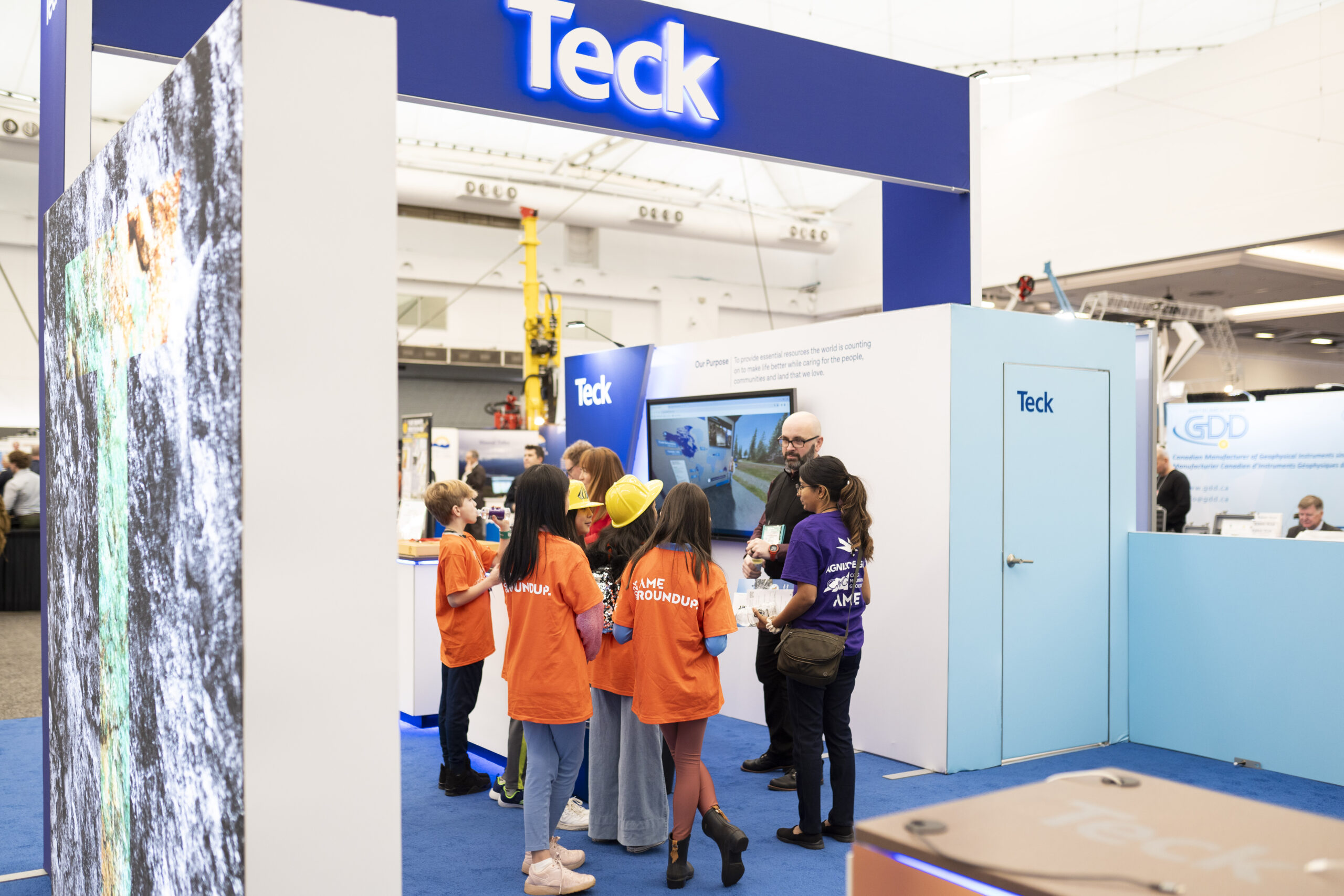
Umar said, like her, many of her classmates are leaning toward mining jobs. Their campus is surrounded by mining complexes and refineries. “We have that exposure,” Umar said. “We have those companies come to our university to give presentations on the roles that they have and the importance of mining.”
But that sort of exposure isn’t the norm.
Students are generally unaware of career paths in the mining industry, Masaki Miyoshi, who leads campus talent acquisition for Teck Resources, told The Narwhal. Miyoshi points to challenges in the post-secondary education pipeline including Halifax’s Dalhousie University closing its mineral resource engineering program and a financial crisis at Laurentian University, impacting its ability to provide mining education. According to a recent survey by the Mining Industry Human Resources Council, mining education programs are small, shrinking, unresponsive to labour demand, geographically concentrated, have capacity issues and are struggling with diversity.
Miyoshi’s team visits campuses to recruit and advertise co-op opportunities and show students how mining has evolved. “It’s not grey beards with pickaxes covered in coal dust,” he said. “We’re talking autonomous vehicles, drone technology” and artificial intelligence.
While the industry is hoping more exposure to students and prospective workers will shift the stereotypes that exist around mining, it could also catalyse conversations around how the industry can change.
Teck, where Miyoshi works, has had its own environmental challenges through its coal mining operations in B.C.’s Elk Valley. He points to Teck’s Nature Positive campaign investing in land conservation, as well as the company’s electrification and decarbonization efforts. Initiatives like this help him have conversations with people about environmental impact, he said “We want to be more sustainable and reduce our carbon footprint.”
Figuring out how to address the environmental challenges involved with processing raw materials is one reason Umar is pursuing a career in mining — a multibillion-dollar contributor to the Canadian economy. “I was looking for a career where, not only I can use my skills and knowledge, but also where I’m able to give back to Canada,” said Umar, who immigrated from India.
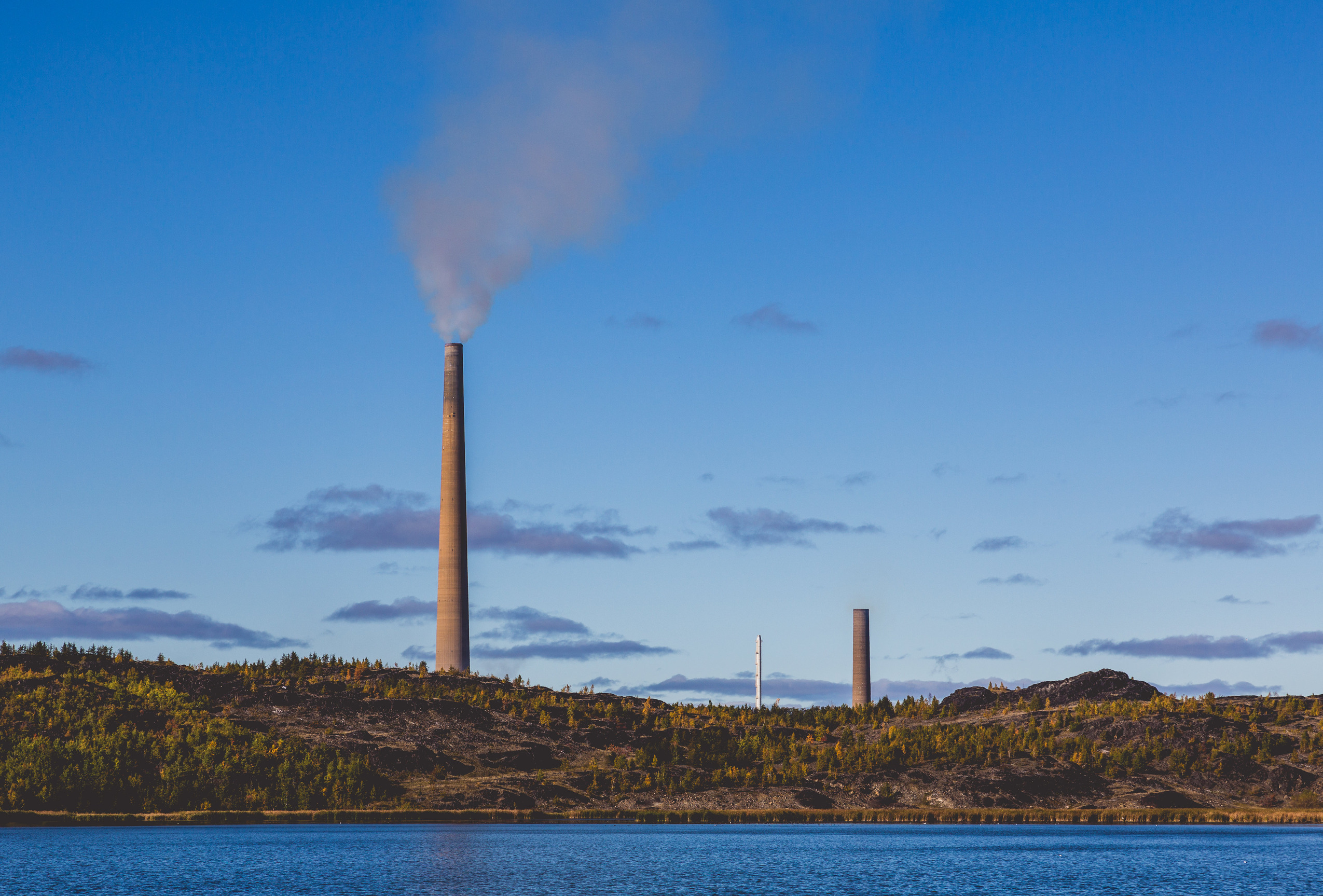
Her first internship was at a mineral processing plant where she developed an interest in how waste rock is managed. Figuring out the most efficient way to extract minerals and addressing the waste in the process are two of the main ways Umar said the industry can reduce their environmental impact. “I’m pretty sure, down the line, we will build up more technologies to address the environmental concerns that we are facing right now,” she said.
In his classroom, Davide Elmo, a mining professor and associate dean in the faculty of applied science at the University of British Columbia, tries to impress on students that the industry needs to shift its thinking toward the impact on future generations.
There are still irresponsible practices from the past that continue today, he said. “I always tell my students, we are not building anything, we are excavating,” he said. “So our job is to try to show to students that we are here not to profit from that, but to minimize the impact.”
Elmo also challenges the idea that a greater demand for minerals means there is a need for more labour. While people are retiring and there is a push for critical minerals, he asks how many mines are actually projected to open in the future and can efficiencies and automation reduce the number of people needed to operate these mines?

Investments by mining companies have dropped over the last several years, according to PricewaterhouseCoopers and the federal government, and Elmo said this reflects the trends in student enrollment. The job prospects are not as good as the industry wants us to believe, he added. The focus for schools and industry, he said, should be on educating fewer students to change the way we mine, rather than increasing enrollment for the sake of the status quo.
Onstad had been leaning toward a career in mineral exploration and mining when she discovered her love of sharing information about geosciences. She decided to switch gears, just a little, from geosciences to geoscience communications.
She’s now a PhD candidate at Simon Fraser University and works for MineralsEd, an educational organization that focuses on Earth science, mineral resources and mining education in British Columbia schools. She spent two days sharing her excitement of geosciences with several groups of school kids at the Association for Mineral Exploration’s annual Roundup conference in January. Sitting on the floor, with several different rocks spread out in front of her, kids in hard hats were invited to bring a rock from home and “stump the geologist” as they learned how minerals are formed and extracted.
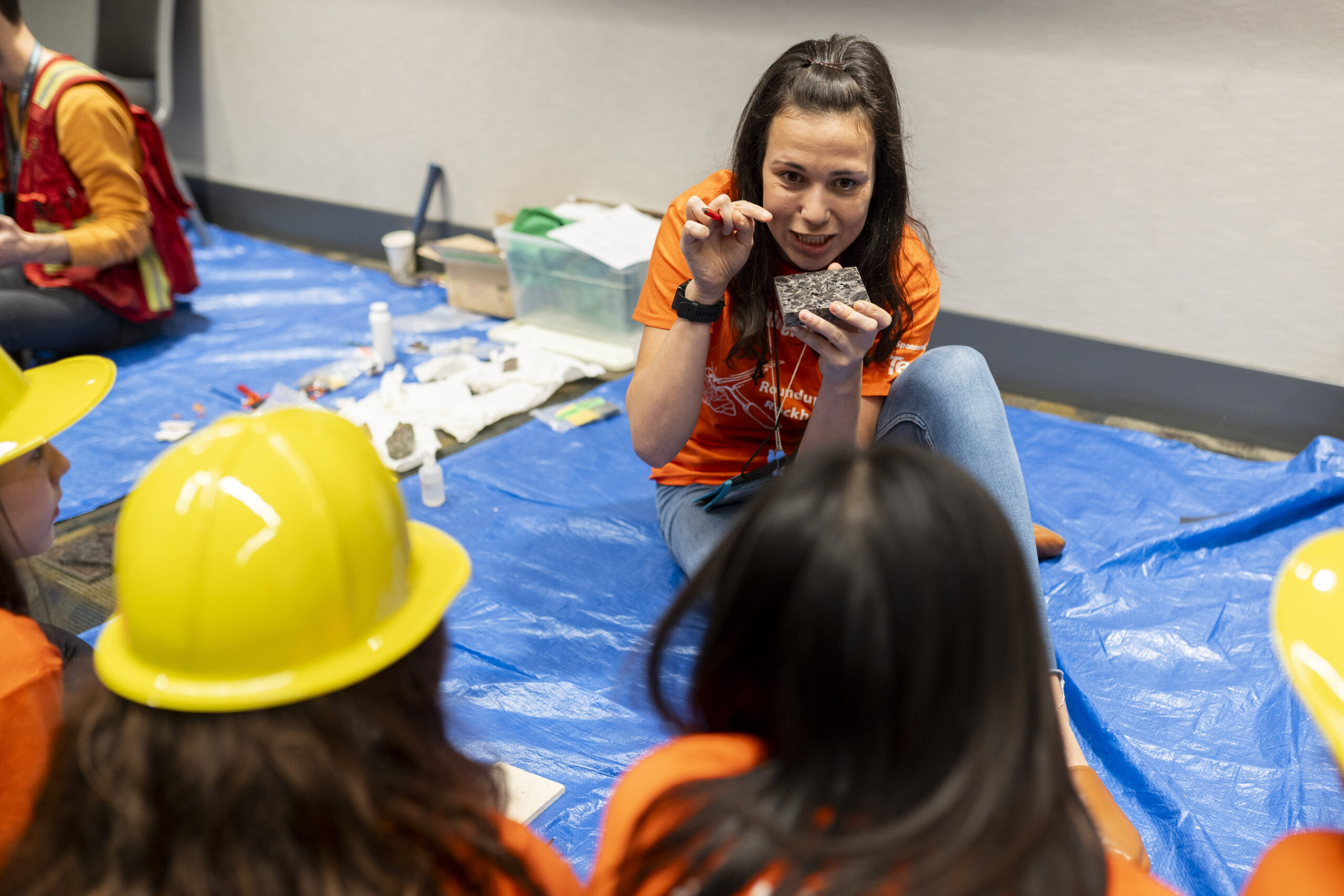
She thinks the industry can do more to have challenging conversations; not ignore pollution that gets into water bodies, she said, or disasters like the collapse of the Mount Polley tailings dam. “I think we have to tackle it head on and go to schools and talk about it in the curriculum — about that link between mining and the climate crisis.”
If young people continue to turn away from the industry, the conversations could get tougher.
“To be fair, this industry has not been perfect in the past,” Onstad said. “It’s still not perfect. But we’re trying to change.”
Updated on April 11, 2024, at 8:57 a.m. PT: This story has been updated to clarify in a caption that elementary school students are brought to the Association for Mineral Exploration conference as part of the MineralsEd Rockhounds program, which leads geology-related activities and field trips for students.
Get the inside scoop on The Narwhal’s environment and climate reporting by signing up for our free newsletter. On a warm September evening nearly 15...
Continue reading
115 billion litres, 70 years to fix, $5.5 billion in lawsuits

Climate change, geopolitics and business opportunities power a blue economy

10 billion litres of sewage are dumped into Winnipeg’s lakes and rivers each year. Some...
